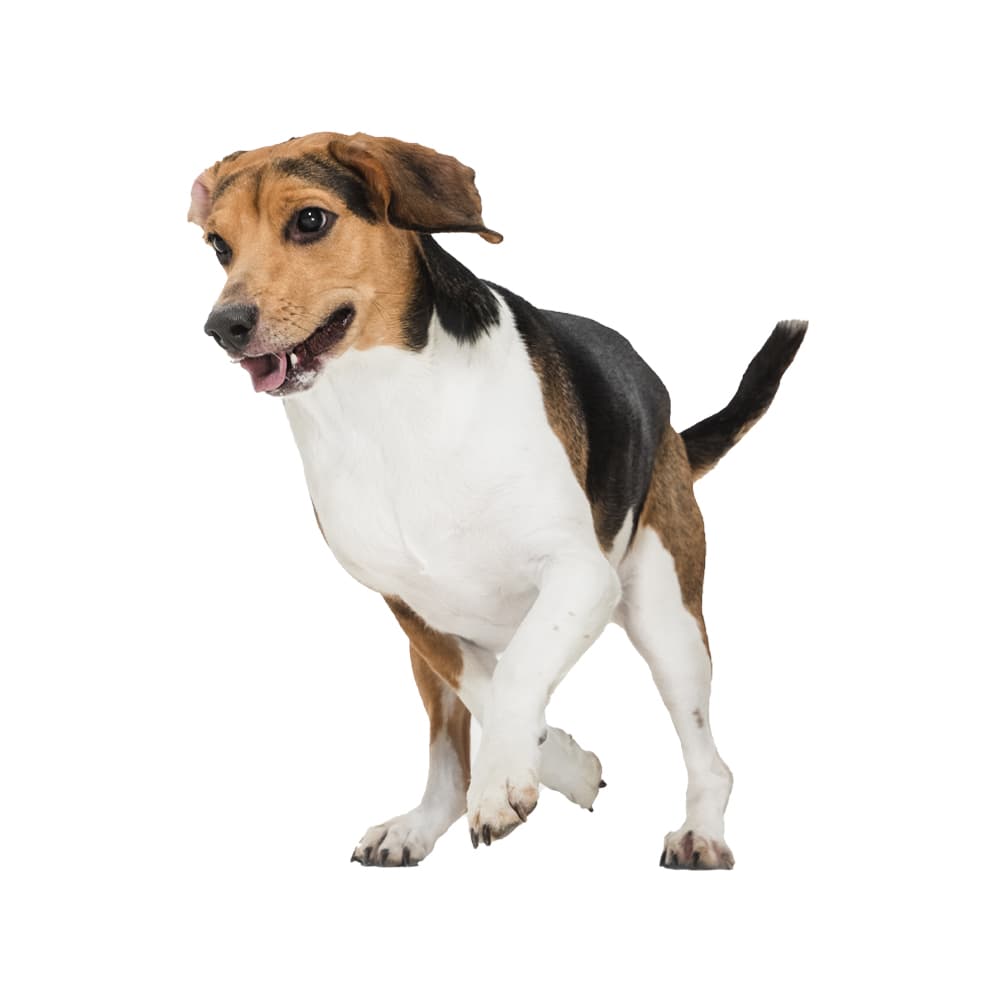Discover your dog's connection to this breed and 200+ others


Discover your dog's connection to this breed and 200+ others



The Estonian Hound is the only dog breed developed in Estonia. The breed was developed in the early 20th century due to a Soviet Union mandate. Prior to 1947, hunters in Estonia used a variety of hounds of different sizes for hunting. However, in 1947, a Soviet Union law stipulated that hunting dogs must not stand more than 45 cm at the shoulder. In response, breeders in Estonia began selectively breeding smaller hounds. The Estonian Hound was created through the crossbreeding of various hounds, including Beagles, Russian-Polish Hounds, and Swiss Hounds among others. These varied genetic contributors account for the breed's relatively small size, distinctive coat coloration, and their keen sense of smell. The Estonian Hound was officially recognized as a breed in 1954. It has since become one of Estonia's national symbols.
Currently, there are no known genetic conditions tightly associated with the Estonian Hound. As for all breeds, genetic screening is recommended to assist veterinarians with diagnosis and proactive care, as well as help breeders identify affected and carrier dogs. Although few studies exist on the genetic conditions associated with this breed, the Estonian Hound may have an increased risk for health problems associated with their parent breeds, the Beagle and the Foxhound. These may include progressive retinal atrophy, entropion, ectropion, allergies, and obesity.
Estonian Hounds are known for their friendly and calm nature. They are good with children and other dogs, making them excellent family pets. As hunting dogs, they are energetic, require regular exercise, and have a strong sense of smell. These dogs are also intelligent and trainable, but their hunting instincts can sometimes make them distracted by scents. It is recommended to have a secure, fenced area for them to play and exercise in.
The Estonian Hound is the national dog of Estonia.
Despite being a small breed, they have a loud and melodious bark which was an important trait for a hunting dog.
They are a relatively new breed, having been officially recognized only in the mid-20th century.
https://www.fci.be/Nomenclature/Standards/366g06-en.pdf
https://www.fci.be/en/nomenclature/ESTONIAN-HOUND-366.html
https://www.dogzone.com/breeds/estonian-hound/#health
Recommended by top vets with decades of experience
21 breeds
64 genetic health markers
50 genetic trait markers
